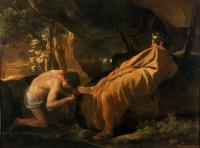
by Catherine Schofield Sezgin, Editor
One of the reasons I miss Amelia has nothing to do with pizza, gelato or art crime: Giampiero Novelli. Since my first walk through the open shops of the medieval center of Amelia, I would greet the man standing in front of the shoe store. He had a friendly smile and a quick cheerful "Ciao Ciao" which he accompanied with a wave. After seeing him sell tickets to the wine tasting festival, helping out at the dining room of Punto Divino (and sometimes in the kitchen), and organizing the medieval festivities in August, I understood that not much happens in Amelia without Giampiero, his wife Paola, and his brother-in-law Luciano Rossi (proprietor of Punto Divino) and Luciano's wife Manuela.
Giampiero's English is better than my Italian, but I asked his niece, Francesca Rossi, our correspondent in Amelia, to pass on a few questions to her uncle.
ARCA blog: Giampiero, how long have you lived in Amelia and are you happy living in this historic town?
Giampiero: I'm living in Amelia since 60 years ago...which means since I was born! And I'm really happy to live in here!
ARCA blog: You have a fantastic selection of shoes for men, women and children. What is it like to be a small businessman in Amelia right now?
Giampiero: Even if we're going through a difficult period, this is still a job full of satisfaction and also, after 30 years doing that, there is also an affection and a devotion to the shoe business that is stronger than everything.
ARCA blog: As I've told our readers, you don't just operate a shoe store. You are involved in just as many activities as the mayor of the town. Have you thought of going into politics or do all your activities keep you too busy?
Giampero: Absolutely not! I like to be involved in volunteering roles to make a better Amelia and to improve the hospitality here but I'm really not interested in being a politician. (After pausing to think, he continued) See, in this moment I am both Prior of my "contrada" and President of the traders' association in town and you know what? Actually it's sort of like being in politics because you have to deal with all the institutions and politicians in town and obviously this give you a certain influence in making decisions.
ARCA blog: Giampiero, many of our readers are learning about Amelia for the first time through our art crime blog. What would you advise someone about visiting Amelia for the first time?
Giampiero: Well...I would suggest a visit to our Museum and obviously Germanico; the Ancient Walls; the S. Magno Monastery with its unique organ; the Cathedral; the Roman Cisterne; the Theatre; and none the less, take your time for a gastronomic itinerary to taste our food and wine specialties!
Editor's note: A contrada is a district, or a ward, of a medieval Italian city. Historical Amelia is divided into five contrade.
 Amelia,Germanicus,Umbrians
Amelia,Germanicus,Umbrians
 No comments
No comments
 Amelia,Germanicus,Umbrians
Amelia,Germanicus,Umbrians
 No comments
No comments





